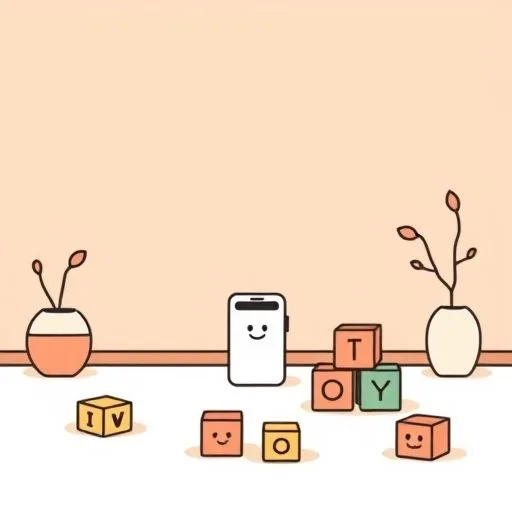
Picture this: I’m snuggling with my seven-year-old daughter after school, her backpack discarded on the floor, chattering excitedly about her day. Her mood shifts from playful giggles to shy whispers, then bursts into unstoppable pride about her new drawing. As I watch these micro-expressions, I realize – this is the human version of what those big companies are trying to do with consumer data! They’re moving from just presenting information to predicting what customers truly need, and in our parenting journey, we’re doing the same thing! Understanding our kids isn’t about algorithms – it’s about love, observation, and responding to their unique needs with the heart of a dad who’s learning every single day about figuring out what our kids need before they even know it themselves!
Traditional vs Digital: Building Your Parenting Insights Toolkit

Remember when we were kids? Our parents pretty much raised us with what they learned from their parents and community. It was like that neighborhood grocery store that carried just enough variety to get by – tried and true, but limited. But times have changed, and so have our tools. Now? We’re living in the age of digital supermarkets where AI analyzes billions of data points to predict what we might want before we even know it ourselves!
The retail industry’s shift from information platforms to predictive ones is fascinating – companies now understand that knowing the WHEN is as important as knowing the WHAT. They’re not just showing products; they’re anticipating what consumers will desire based on patterns. As Dad, I find this both overwhelming and incredibly inspiring!
Think about it – in our parenting toolkit, we’re doing the same instinctively. When my daughter wakes up with extra sleepy eyes, I probably won’t suggest our usual morning park adventure. Instead, it might be a cozy reading session with her favorite mysterious creature book. I’ve predicted her need for comfort based on patterns I’ve observed over time. That’s our human superpower – we don’t need machine learning to understand our kids!
How Can You Decode Your Kids Like a Predictive Analytics Model?

In my world, I see how predictive analytics transform raw numbers into meaningful insights. In our home, our ‘data’ comes from those precious moments that create our family’s unique rhythm – the way her eyes light up when we talk about drawing, the slight pout when dinner isn’t her favorite, the hands that fidget when she’s nervous about something new. Just like these companies use data to predict what we want, we can use our observations to predict what our kids need.
When companies use AI to detect subtle changes in consumer preferences, they’re not just looking for big jumps in purchase history – they’re noticing the small fluctuations that indicate emerging trends. That’s exactly what makes parenting so magical! Could it be that these seemingly tiny signals are actually the universe’s way of guiding us?
The little things matter most! The sudden interest in dinosaurs that lasts three days before switching to space exploration. The particular way she says ‘I’m okay’ when we know she’s anything but. Maybe it’s the sudden obsession with k-pop idols after watching just one performance, or the insistence on playing traditional Korean games with grandma during weekend visits. These are our data points! These are the patterns that help us predict their emotional needs!
It’s been amazing to watch how AI in education can help identify learning styles or developmental patterns at our daughter’s school. Just like those retail companies are using data to personalize shopping experiences, we can use observation to personalize our parenting. But here’s the beautiful difference – while algorithms might help the industry create more targeted ads, we’re using our ‘data’ to create more targeted hugs, more specific encouragement, more meaningful connections!
The Human-Powered Parenting Touch in High-Tech Times

With AI helping retail companies streamline supply chains and reduce waste, I can’t help but think about how we can streamline our parenting approach to reduce wasted moments and maximize precious connections. Technology in our family isn’t about replacing genuine interaction – it’s about enhancing it!
Sometimes I watch my daughter interact with educational apps that adapt to her learning pace in real-time. The app doesn’t just present information; it adjusts based on her responses, finding that sweet spot where challenge meets engagement. That’s exactly what we try to do every day! While technology can help provide insights, the programming that counts is love!
It’s our adaptability to their changing moods, needs, and growth spurts that truly matters. I love that in these tech-driven times, we’re reminded of what’s truly valuable – the human connection. Those retail companies are investing in better customer relationships, not just more efficient sales processes. And as parents, we’re constantly focusing on building relationships with our children, not just managing their schedules and development milestones. It’s about heartbeats not just data points!
Preparing Your Child for Tomorrow: When AI Literacy Meets Imagination

The retail industry innovation map shows us that companies are investing heavily in understanding future consumer behaviors to stay relevant. As parents, we’re looking seven, eight, even ten years ahead too – wondering what world our children will inherit and what skills they’ll need to thrive.
My daughter’s generation will grow up in a world where AI is as commonplace as smartphones are today. Helping them develop AI literacy isn’t about creating mini-data scientists overnight – it’s about building curiosity and adaptability. Just like helping my daughter understand the ‘why’ behind her favorite animated show’s character development helps with storytelling skills, introducing her age-appropriate concepts about how machines learn helps with logical thinking.
The research shows that predictive analytics is transforming business operations by analyzing vast amounts of consumer data to anticipate needs. In our home, we’re doing the same by creating rich, diverse experiences that help understand her evolving interests. We might use educational apps that adapt to her learning style one day, then spend hours building with blocks the next, or take spontaneous walks to discover neighborhood treasures on another day. This balanced approach helps create nimble, creative thinkers ready for whatever the future holds!
FAQs: Big Questions, Human Answers
You might be wondering how to apply these insights to your daily life, so let’s tackle some common questions.

Q: How do I balance technology use with quality family time?
Just like retail companies are finding ways to make technology more human-centered, we can approach screen time with intentionality. The key isn’t avoiding technology – it’s being intentional about when, where, and why we use it. There’s nothing wrong with enjoying educational apps or shows, but making sure they complement rather than replace face-to-face time. Remember, even tech companies are realizing the importance of human connection!
Q: How do I really ‘understand’ my child when they’re young?
While algorithms analyze consumer data, we use observation and presence! The most powerful predictive tool a parent has is attentiveness. Could it be that our most powerful tool as parents isn’t found in any app, but simply in paying attention? Notice when their energy shifts, what makes their eyes light up, which activities reduce their anxiety over time.
Q: What does AI really mean in the context of parenting?
Think of AI in education and daily life as a compass, not a map – it can guide but shouldn’t dictate. While those retail companies use AI to understand consumer trends, we’re using observation to understand our unique children. The most valuable ‘data’ we gather for parenting is the emotional kind. The ‘whys’ behind actions that nothing can measure – that’s our human magic!
So, as we navigate this world of big data and big love, remember that the most important tool we have is our own intuition and the love we have for our kids. With that, we can face whatever challenges come our way. The combination of our human understanding and the thoughtful use of technology creates parenting that’s both informed and heart-centered. It’s not about choosing between tech and touch – it’s about using our superpowers as parents to know our kids better and love them deeper every single day!
Source: Tech-tonic shifts in the retail sector: How technology meets consumer needs, Live Mint, 2025/09/12
